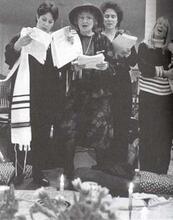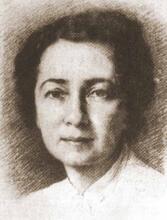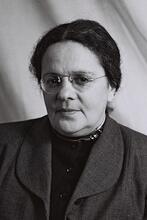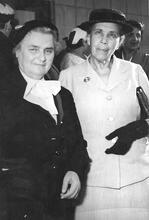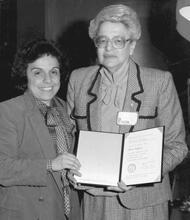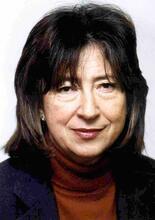Elizabeth Blume Silverstein
Born and raised in Newark, New Jersey, lawyer Elizabeth Blume Silverstein attended New Jersey Law School, from which she graduated in 1911. Silverstein was a law clerk until she was twenty-one, when she began a criminal law practice. She successfully defending Orzio Ricotta on a homicide charge, after which she was welcomed by countless organizations as an activist and speaker and held leadership positions in several legal groups, including the Women Lawyers Association and Essex County Legal Advisory Board. Silverstein was also involved with the Women’s Political Union, the League of Women Voters, and the Business Women’s League, in addition to being a two-time member to the American Jewish Congress. Silverstein worked until her early eighties.
Article
Elizabeth Blume Silverstein’s long and productive life revolved around her work in criminal law, real estate management, and Jewish life.
Born on November 2, 1892, in Newark, New Jersey, Elizabeth was Selig and Goldie R. Aranowitz Blume’s oldest child, followed by three brothers and three sisters. Selig owned two successful dry-goods stores in Newark. Money was thus available for Elizabeth’s education. They were Conservative Jews.
At fourteen, Elizabeth said she wanted to be a lawyer. At sixteen, in 1908, she entered New Jersey Law School, graduating with an LL.B. in 1911, nearly three years before she could be admitted to practice. A law clerk until she was twenty-one, she was admitted as an attorney in November 1913 and began a criminal law practice. In February 1917, she was admitted as a counselor. Her practice grew slowly until April 1918 when, without co-counsel, she successfully defended Orzio Ricotta on a homicide charge, a first for a New Jersey woman lawyer. Her celebrity was established. She was admitted to practice before the United States Supreme Court in 1921. In fifty years of practice she is said to have handled more than five thousand cases.
An activist, leader, and magnetic speaker, organizations welcomed her. She was a member of the American Bar Association; vice president of the Women Lawyers Association, predecessor to the National Association of Women Lawyers; and first woman member of the Essex County Legal Advisory Board and the Essex County Bar Association. Before suffrage, she joined the Women’s Political Union and afterward the League of Women Voters and the Business Women’s League. She was president of the Heinberg Republican Club and the first woman delegate from the Twelfth Congressional District to the Republican Convention in 1932. But her greatest efforts were devoted to Zionism.
Elected to the American Jewish Congress in 1916, she was chosen to lead a parade of forty thousand protesting Senate ratification of a treaty discriminating against Polish people and later led twenty-five thousand marchers in Newark’s Balfour parade. In 1923, she was elected a delegate to the second American Jewish Congress. For years, she chaired fund-raising drives. In 1926, as president of the Louis D. Brandeis Lodge, Independent Order B’rith Abraham, she was the first woman president of a men’s fraternal organization.
Some time in the early 1920s, she met Max Silverstein, an Orthodox Jew thirteen years her senior. He was a lawyer, real estate investor, general counsel to banks, and a Jewish community leader in Borough Park, Brooklyn. With Rabbi Stephen Wise, he was a co-organizer of the American Jewish Congress and a founder and patron of Yeshiva University. Max, caring for his aged mother, did not feel free to marry until his mother died in 1933. In 1934, Elizabeth and Max were married. Against all odds, in 1938, at age forty-six, Elizabeth Silverstein gave birth to a son, Nathan Royce. She reduced her law practice. Max died on August 10, 1955, at seventy-six, of a heart ailment and stroke. Silverstein continued his real estate practice and investments.
Elizabeth Silverstein worked until her early eighties. She and her son, an architect and real estate lawyer, moved to New York’s Fifth Avenue. After years of deteriorating health, Elizabeth Blume Silverstein died of heart failure on February 3, 1991, at age ninety-eight. She was buried in Mt. Hebron Cemetery, Queens, New York.
Thomas, Dorothy. Women Lawyers in the U.S.; Folsom, ed. The Municipalities of Essex County New Jersey 1666–1924. Vol. 3 (1925).
NYTimes, August 17, 1955, and Obituary. February 5, 1991.
Silverstein, Nathan Royce. Interview by author, October 1996.
WWIAJ (1938).

